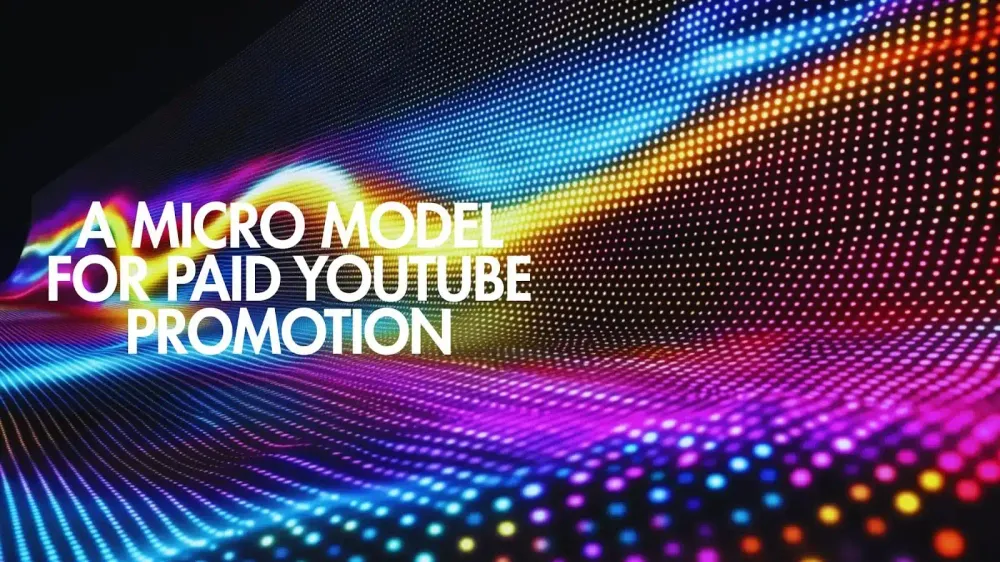
The ROI of Attention: A Micro Model for Paid YouTube Promotion
When musicians buy ad traffilc, they’re not just buying views—they’re buying attention. The real question is whether that attention pays back. In the era of short attention spans and endless content, the winners aren’t those who spend the most, but those who measure their results like pros.
Try ArtistPush YouTube promotion to estimate your CAC before launching your next campaign—it’s the simplest way to see how your spend translates into subscribers and lifetime value.
Below, we’ll break down a simple micro-model that helps creators calculate whether a small, targeted YouTube promo can be profit-positive when the lifetime value (LTV) of each subscriber is higher than the customer acquisition cost (CAC).
Inputs That Drive ROI: Understanding CAC, CTR, CVR, and LTV by Music Niche
Every YouTube ad campaign begins with a few key performance variables. You can see them as knobs you can set up before the launch.
- CAC (Cost for Acquired Subscriber) total ad spend split by number of new subscribers gained.
- CTR (Click-Through Rate) is the part of folks who click on your video after seeing the ad.
- CVR (Changing Rate) is the part of watchers who turn into followers.
- LTV (Lifetime Worth) ͏is the whole expected money or stream equal from a single subscriber over time.
Let's take an easy example. Think you are running an ad plan for a cool music maker.
Here, LTV > CAC, meaning the campaign generates a positive ROI of roughly 80% on attention. That’s not just good—it’s scalable.
The beauty of this model is that it works even for micro-budgets. If you can prove profit at $100 spend, you can safely expand to $500 or $1,000, knowing you’re compounding growth instead of burning capital.
Finding the Sweet Spot: How to Avoid Diminishing Returns in Ad Spend
When you raise your ad money, your extra return—the profit from each add͏ed dollar—often goes down. This happens since the crowd you hit later is not as interested as your main group.
The key principle: Keep growing till small gain matches small cost (MR = MC).
That says if your next $10 of ad money only brings in $9 of value from subscribers, you’ve gone over the line of good efficiency. Go past that and you’re not really making a profit—you’re just getting attention.
To find the optimal level:
- Track real subscriber gains per spend segment. Split your plan into tiny pieces—like, $50 bits.
- Calculate incremental CAC. Each time, ask: Did this group get less or more signers for each dollar?
- Stop when efficiency drops by 20–25%. That’s usually your point of diminishing returns.
A pop artist spends BDT 10,000 on YouTube ads. The first 5,000 BDT brings in 1,000 subs (CAC = 5 BDT). The next 5,000 BDT adds only 600 subs (CAC = 8.3 BDT). The second segment costs 66% more per sub. Time to stop scaling—or retarget smarter.
Sensitivity Analysis: Testing the Model When CPM or CVR Changes
Even a solid model can shift fast if market variables move. Two factors have the most impact: CPM (cost per thousand impressions) and CVR (conversion rate).
Let’s model how ±20% swings affect your profit margin:
Takeaway: small efficiency gains (lower CPM or higher CVR) dramatically improve ROI. That’s why creatives who optimise their visuals, thumbnails, and audience targeting consistently outperform.
Mini Case Study: A Music Video Launch That Turned Metrics Into Momentum
Let’s look at a compact real-world scenario. A rising indie artist invests $300 in targeted YouTube promotion for a new single. Average CPM: $5.50. That yields about 54,500 impressions, with a CTR of 3.2%—or 1,744 clicks. Out of those, 15% subscribe, adding 262 new fans.
If each fan later contributes $1.40 in streaming and merch value, that’s $366.80 in LTV versus $300 in spend—a 22% profit margin in less than a month.
And unlike one-time ad clicks, subscribers stick around. The true payoff compounds with every upload.
This shows why micro-spends can outperform large-scale campaigns: they allow constant feedback, fast learning, and agile content optimization.
Final Takeaway: Invest in Attention Like You’d Invest in Fans
Advertising doesn’t need to be risky—it just needs to be measured. Treat your attention budget the same way you treat your recording or mastering budget: track it, test it, and expand only when returns justify the cost.
A paid view that converts to a loyal fan isn’t an expense—it’s an asset.

